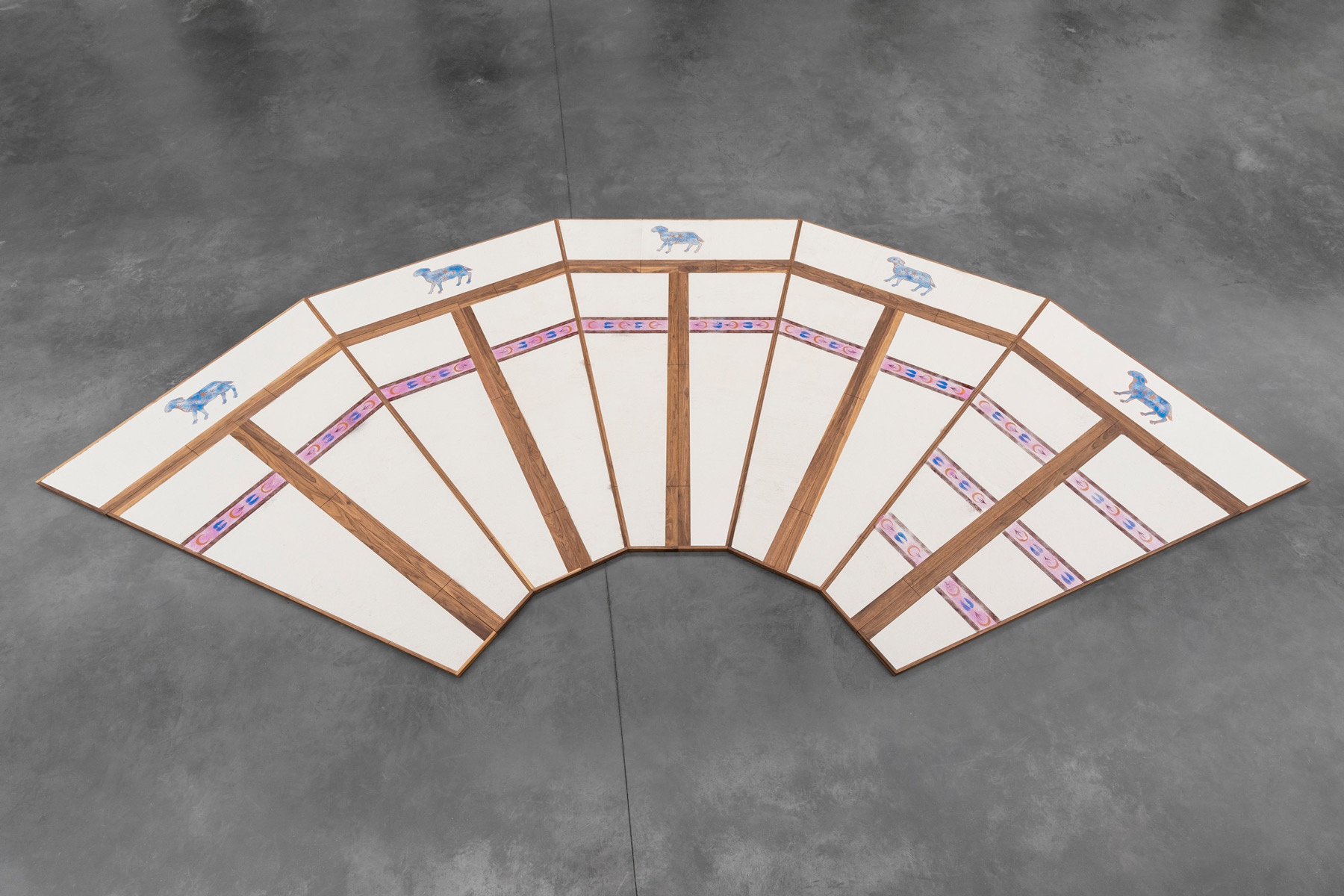
Heerdgang, 2021
wood, sand and pigment
15 elements, 4 x 300 x 200 cm each
Photo credits: Gunnar Meier
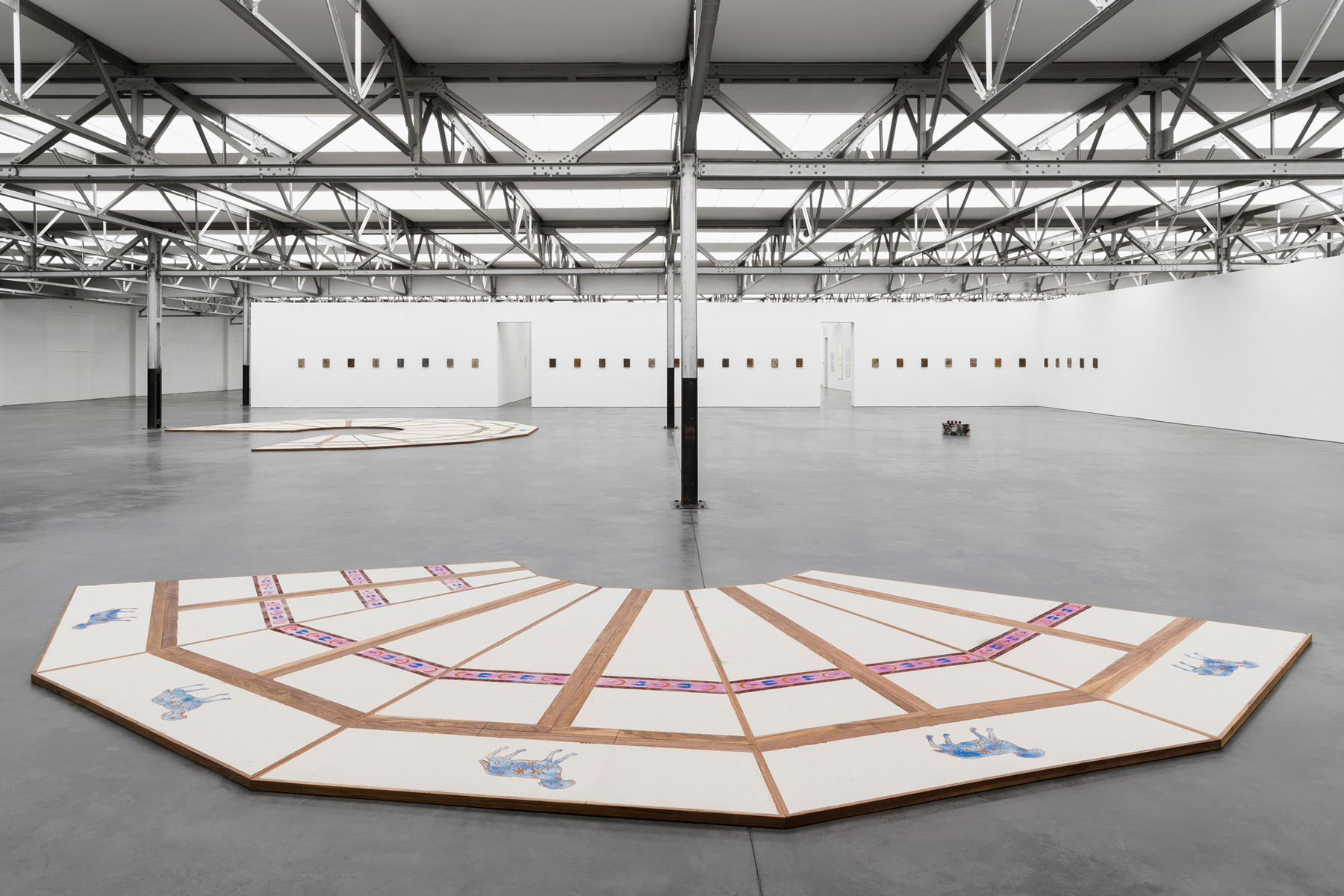
Installation view of Heerdgang at Museum de Pont, Tilburg, 2021
Photo credits: Gunnar Meier
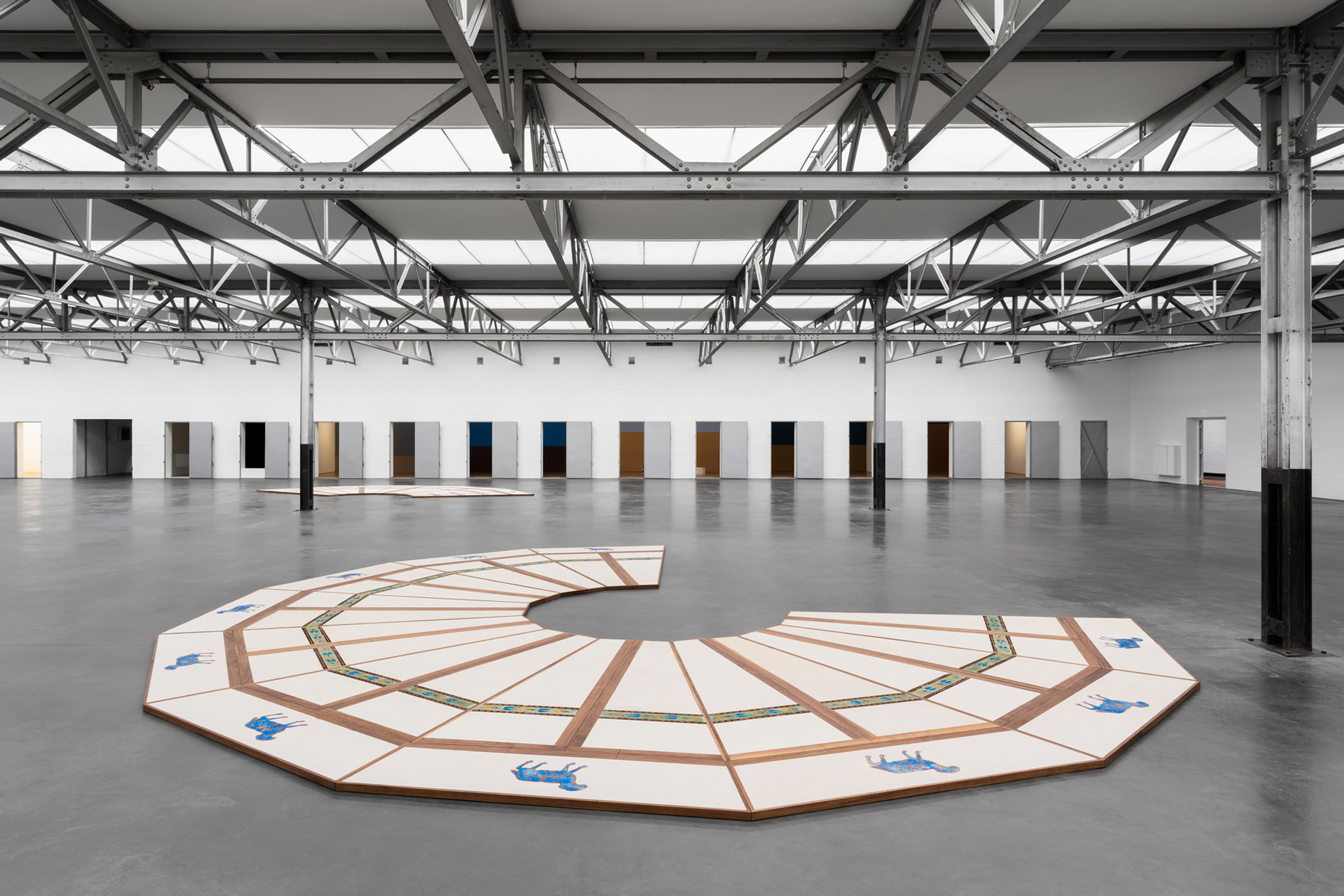
Installation view of Heerdgang at Museum de Pont, Tilburg, 2021
Photo credits: Gunnar Meier
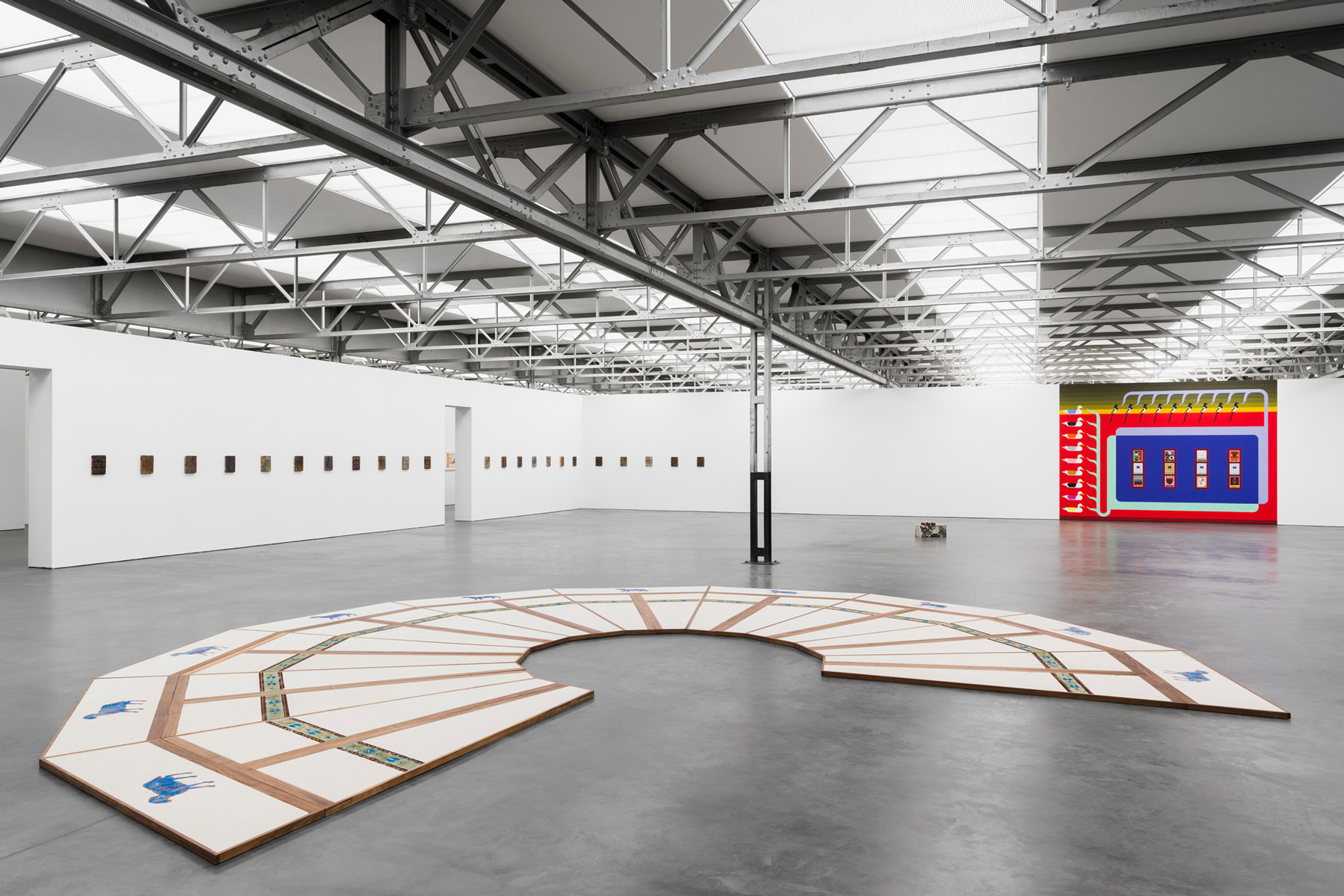
Installation view of Heerdgang at Museum de Pont, Tilburg, 2021
Photo credits: Gunnar Meier
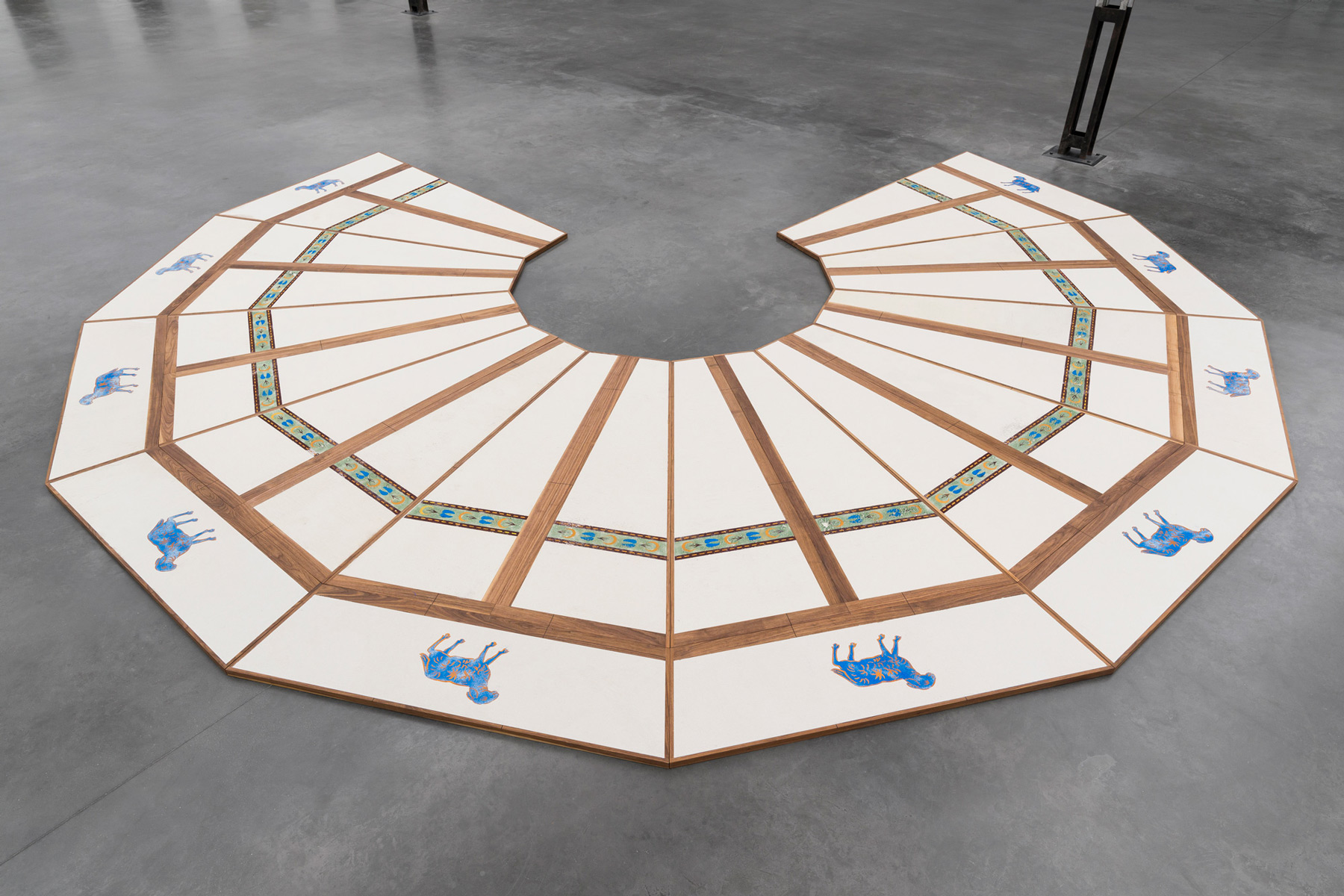
Heerdgang, 2021
wood, sand and pigment
15 elements, 4 x 300 x 200 cm each
Photo credits: Gunnar Meier
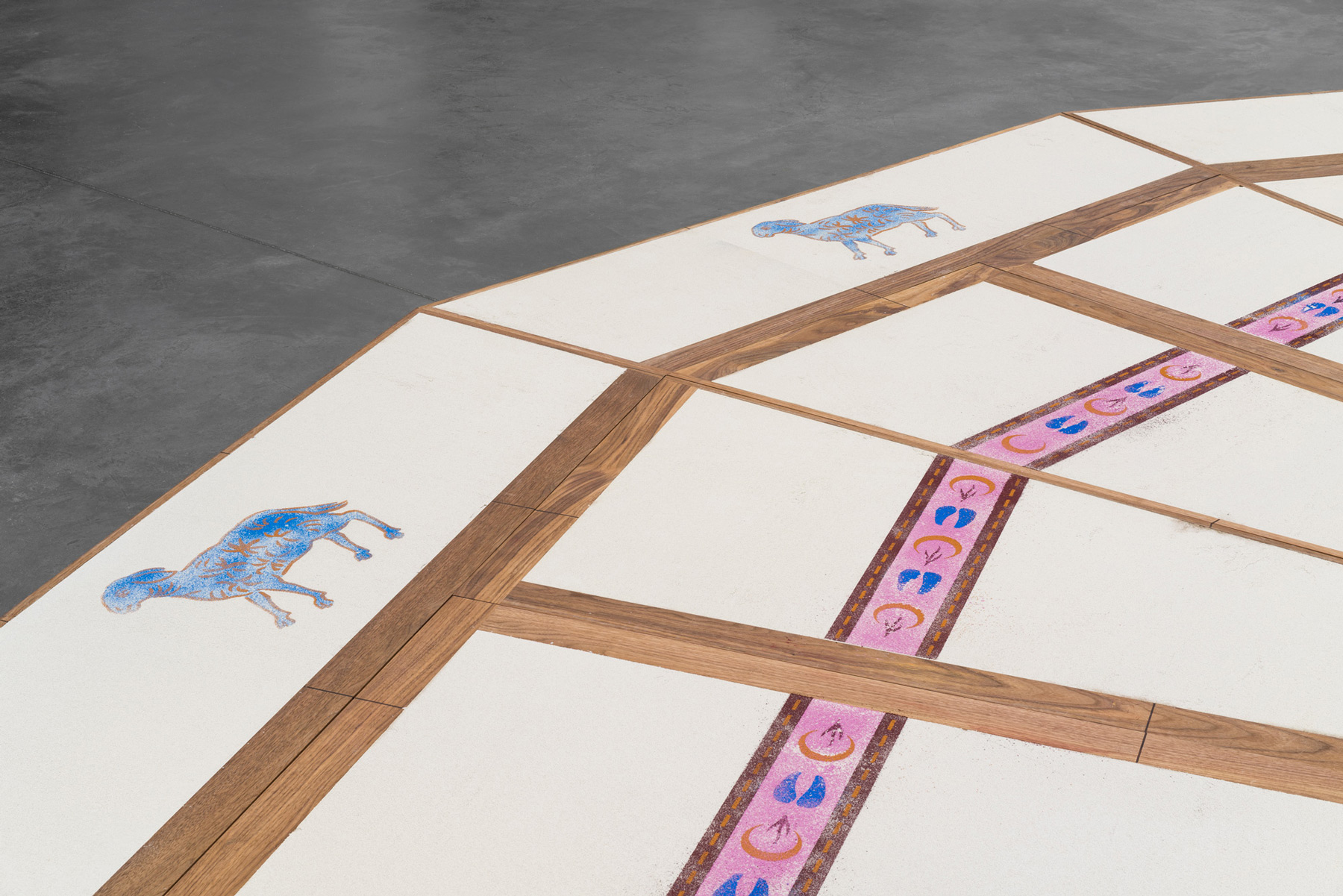
Heerdgang, 2021
wood, sand and pigment
15 elements, 4 x 300 x 200 cm each
Photo credits: Gunnar Meier
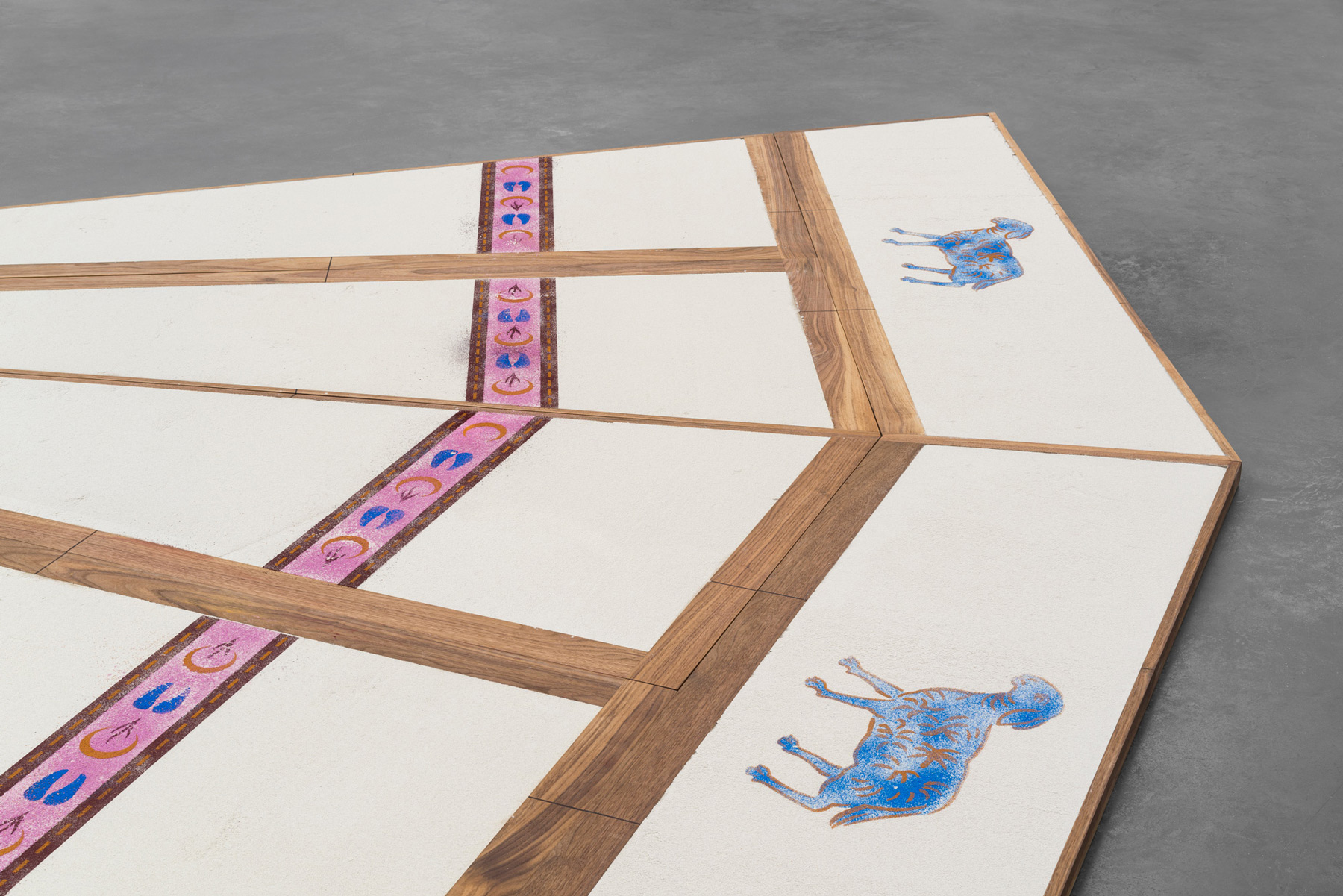
Heerdgang, 2021
wood, sand and pigment
15 elements, 4 x 300 x 200 cm each
Photo credits: Gunnar Meier
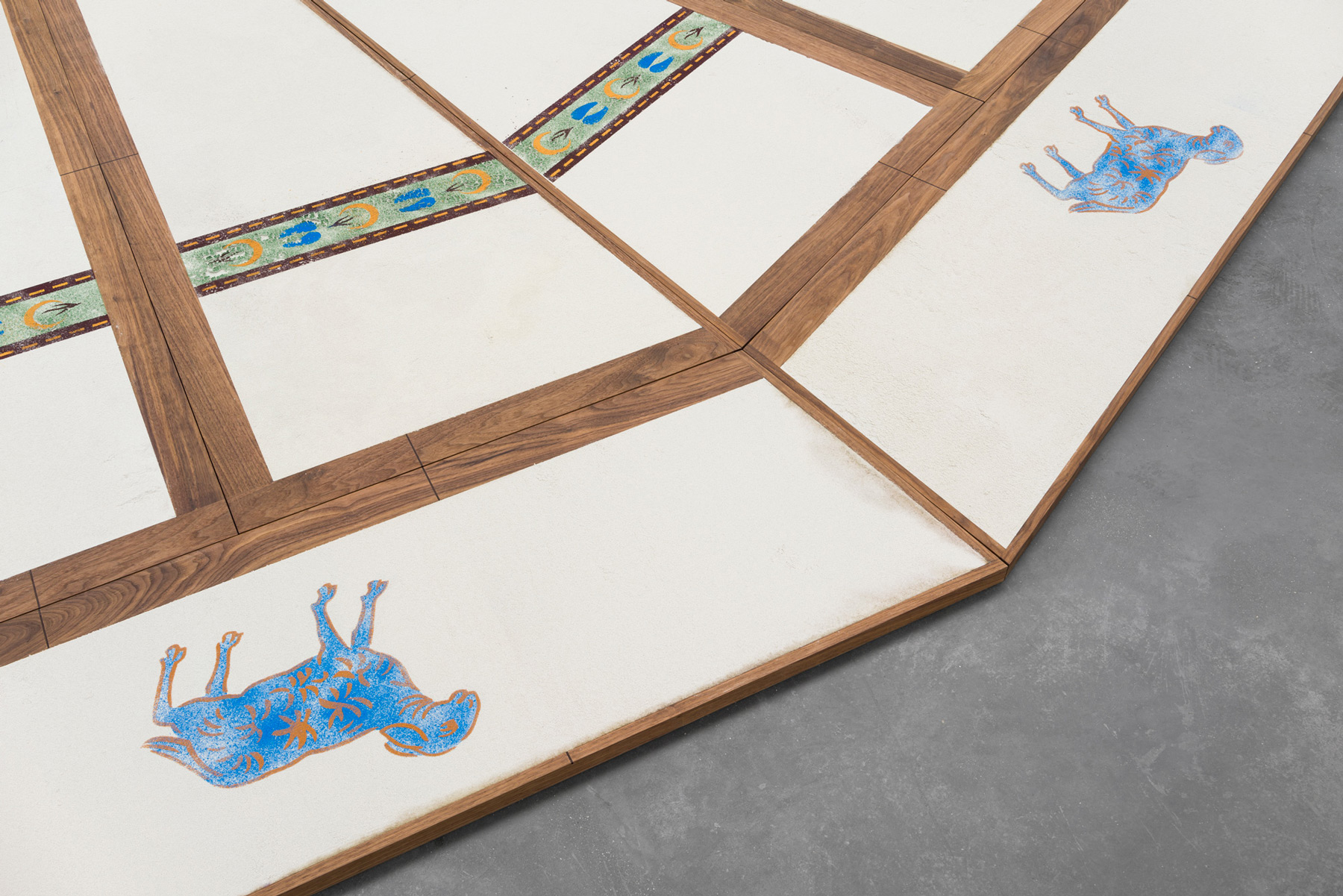
Heerdgang, 2021
wood, sand and pigment
15 elements, 4 x 300 x 200 cm each
Photo credits: Gunnar Meier
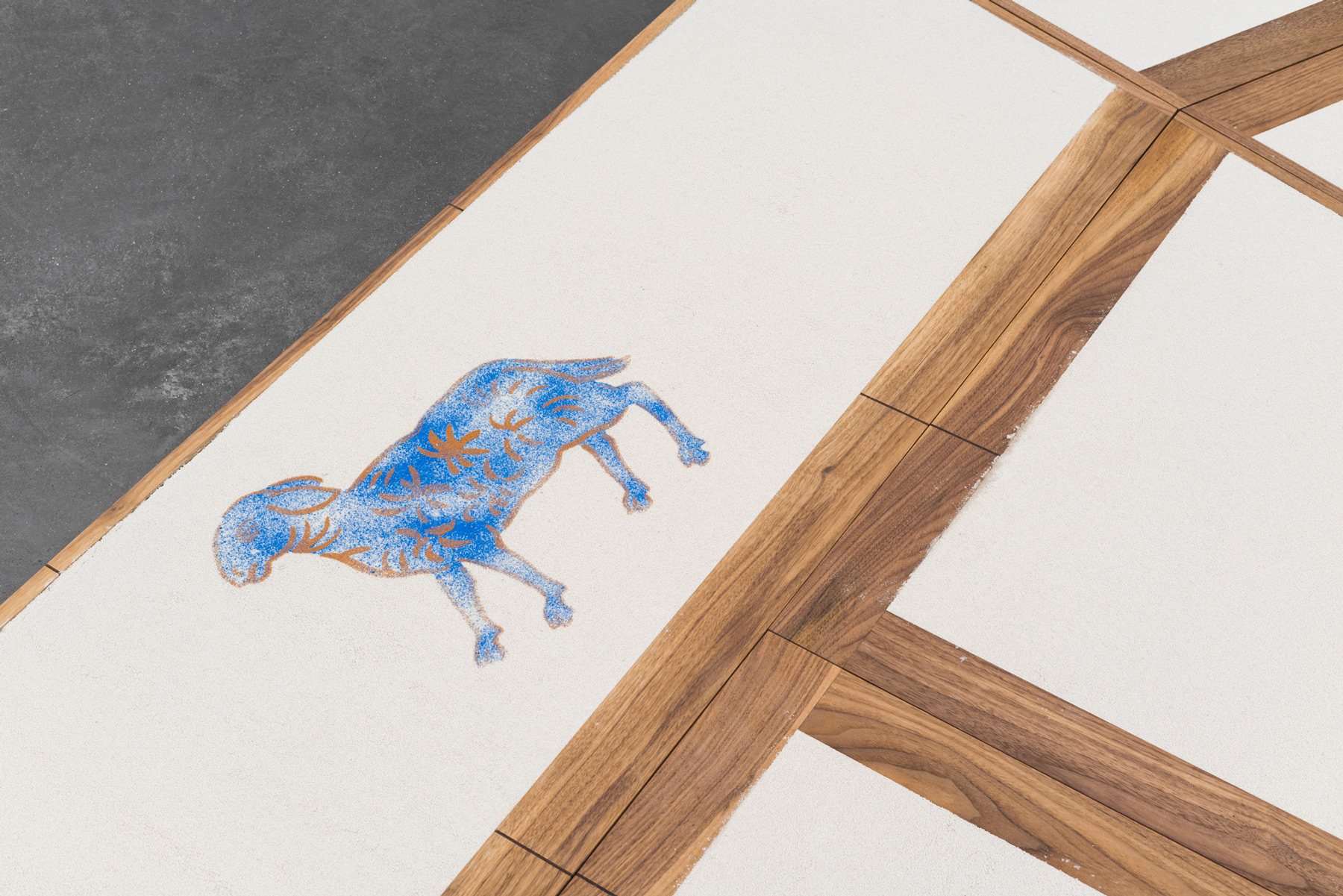
Heerdgang, 2021
wood, sand and pigment
15 elements, 4 x 300 x 200 cm each
Photo credits: Gunnar Meier

Heerdgang, 2021
wood, sand and pigment
15 elements, 4 x 300 x 200 cm each
Photo credits: Gunnar Meier
These sand paintings are based on a local custom in the Kempen: in the 18th century the floors were scrubbed with white sand. Women sitting by the stove made sand paintings based on folkloric motifs. The first sand painting Bosmans made depicted a canary - the bird taken into the mines as a smoke detector.
Bosmans developed new sand paintings for De Pont, the shape of which is based on the Heerdgang, the daily tour of a shepherd and his flock across shared grasslands. The Heerdgang ended in the evening on the village square. This allowed a translation from a physical to a social structure: in the Middle Ages, the word Heerdgang was used to describe and name residential areas. These often originated on a Y or T junction. The triangular structure as a result of the Heerdgang is also still visible in Tilburg, such as at the Wilhelminapark and the Heuvel.